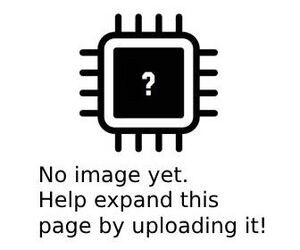MacBook Pro A2338 camera not detected after history of liquid damage repair and MacBook Pro A1707 Not turning on, no shorts repair: Difference between pages
No edit summary |
No edit summary |
||
| Line 1: | Line 1: | ||
{{Repair Guide | {{Repair Guide | ||
|Device=MacBook Pro | |Device=MacBook Pro A1707 | ||
|Affects parts=Motherboard, | |Affects parts=Motherboard | ||
|Type=Soldering | |Needs equipment=multimeter, soldering iron, soldering station | ||
|Type=Soldering | |||
}} | }} | ||
{{stub}} | {{stub}} | ||
==Problem description== | ==Problem description== | ||
<nowiki>#</nowiki>incomplete | |||
Provide a concise description of the issue here. Be as specific as possible to help readers quickly determine whether or not this is the exact problem they are facing. | |||
[[File:Placeholder image.jpg|thumb|Example image (Figure 1) -- No image yet. Help expand this page by uploading it!]] | |||
==Symptoms== | ==Symptoms== | ||
* | *Not turning on | ||
* | *Drawing 0A (no current) on 20V as measured by USB-C meter | ||
==Solution== | ==Solution== | ||
=== | ====Check for low resistance to ground on SMBUS_SMC_5_G3H_SDA or SMBUS_SMC_5_G3H_SCL==== | ||
On older MacBooks, this would result in no battery recognition and a lower voltage on PPBUS_G3H—on USB-C models, it actually results in the machine not turning on at all. Can be caused by a tiny speck of conductive material in the battery connector. | |||
====Check for 0.4 V in diode mode on SMBUS_SMC_5_G3H_SDA and SMBUS_SMC_5_G3H_SCL (red probe on GND)==== | |||
==== | if it's higher the I<sup>2</sup>C signals will look funny, not going just between 0 and 3.3 V. Check D6950—it can be blown when the SMC goes. | ||
====Check voltage on PPBUS_G3H==== | |||
If you have no or low voltage on this rail, check the repair steps below. | |||
==== | |||
===Repair Steps=== | ===Repair Steps=== | ||
====low resistance to ground on SMBUS_SMC_5_G3H_SDA or SMBUS_SMC_5_G3H_SCL==== | |||
==== | Clean the conductive material, [https://www.youtube.com/watch?v=PDKlWu1eDFA&t=254s Video] | ||
====0.4 V in diode mode on SMBUS_SMC_5_G3H_SDA and SMBUS_SMC_5_G3H_SCL (red probe on GND)==== | |||
<nowiki>#</nowiki>incomplete | |||
====Low or no voltage on PPBUS_G3H==== | |||
It could be bad/dead ISL9239. Also check for ≈2.4 Ω on the two ISL9239 current-sensing circuits. If any of the 1 Ω or current-sensing resistors are blown, replace them first, or you will re-kill any new ISL9239 you try! | |||
# | |||
Latest revision as of 15:33, 29 October 2023
| MacBook Pro A1707 Not turning on, no shorts repair | |
|---|---|
| Device | MacBook Pro A1707 |
| Affects part(s) | Motherboard |
| Needs equipment | multimeter, soldering iron, soldering station |
| Difficulty | |
| Type | Soldering |
This article is a stub. You can help Repair Wiki grow by expanding it
Problem description
#incomplete
Provide a concise description of the issue here. Be as specific as possible to help readers quickly determine whether or not this is the exact problem they are facing.
Symptoms
- Not turning on
- Drawing 0A (no current) on 20V as measured by USB-C meter
Solution
Check for low resistance to ground on SMBUS_SMC_5_G3H_SDA or SMBUS_SMC_5_G3H_SCL
On older MacBooks, this would result in no battery recognition and a lower voltage on PPBUS_G3H—on USB-C models, it actually results in the machine not turning on at all. Can be caused by a tiny speck of conductive material in the battery connector.
Check for 0.4 V in diode mode on SMBUS_SMC_5_G3H_SDA and SMBUS_SMC_5_G3H_SCL (red probe on GND)
if it's higher the I2C signals will look funny, not going just between 0 and 3.3 V. Check D6950—it can be blown when the SMC goes.
Check voltage on PPBUS_G3H
If you have no or low voltage on this rail, check the repair steps below.
Repair Steps
low resistance to ground on SMBUS_SMC_5_G3H_SDA or SMBUS_SMC_5_G3H_SCL
Clean the conductive material, Video
0.4 V in diode mode on SMBUS_SMC_5_G3H_SDA and SMBUS_SMC_5_G3H_SCL (red probe on GND)
#incomplete
Low or no voltage on PPBUS_G3H
It could be bad/dead ISL9239. Also check for ≈2.4 Ω on the two ISL9239 current-sensing circuits. If any of the 1 Ω or current-sensing resistors are blown, replace them first, or you will re-kill any new ISL9239 you try!
